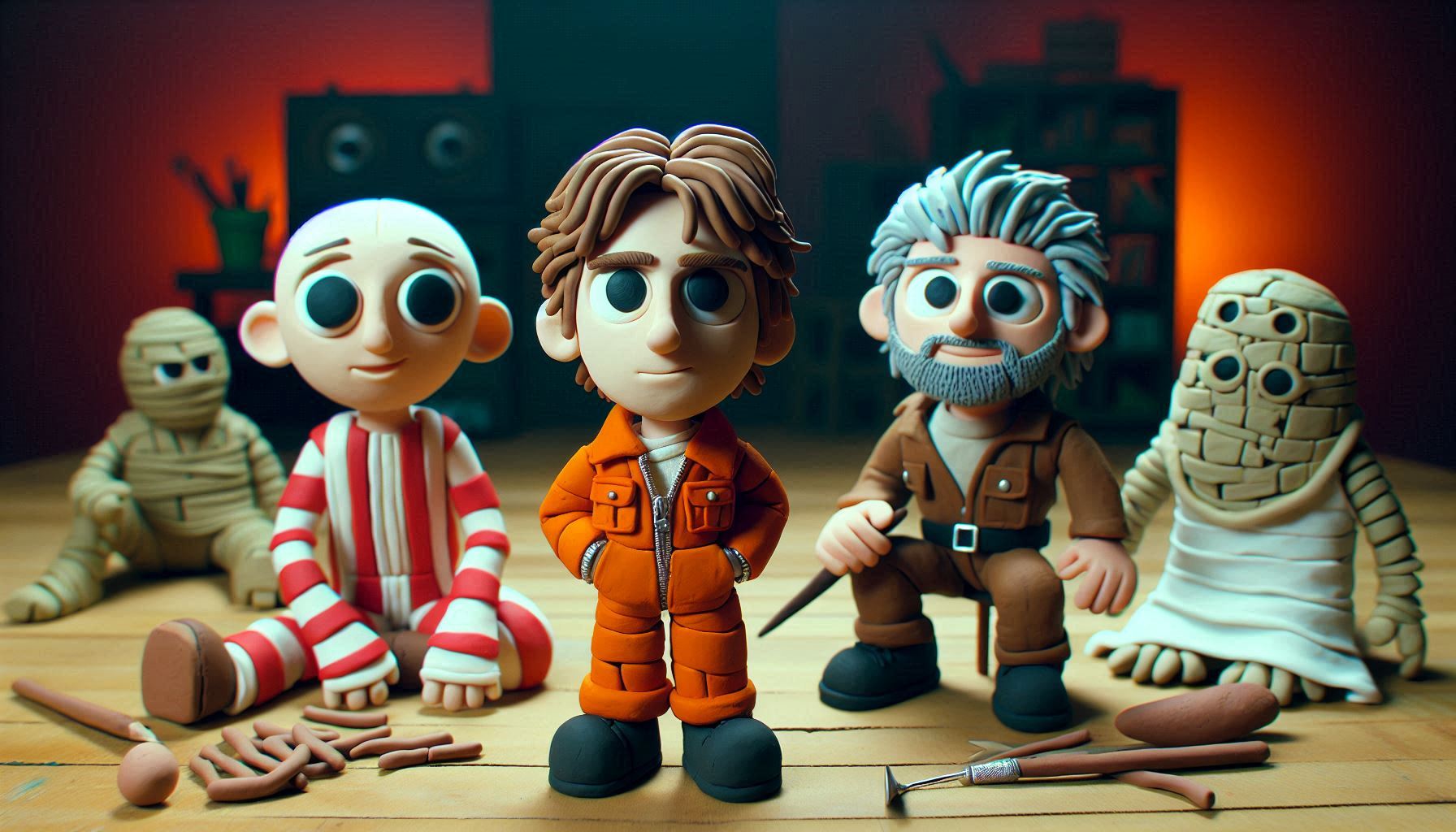When planning a story, writers often spend hours creating detailed character profiles for the protagonists. However, it’s important not to overlook the significance of secondary characters. Without them, the story wouldn’t be the same.
While secondary characters may have less weight on the main plot, they still play a crucial role. They may support the protagonist, drive the story forward, lead a secondary plot, influence a main character’s arc, or provide comic relief at key moments.
Secondary characters serve various functions in a story, but the key is that they must have a purpose. When planning a novel, writing a script, or reviewing a manuscript, don’t forget to ask yourself: Would the story be the same if this secondary character were not there? If the answer is yes, it may be worth considering removing them. If the answer is no, you are on the right track.
What is a Secondary Character?
The answer to this question depends on what type of secondary character we’re talking about, since there are various types of secondary characters categorized based on their screen time or significance in the story. You may have observed that secondary characters are referred to by different names: Side characters, minor characters, or supporting characters.
The terminology is less important than the role they play in the story. What do we need them for? That is the key that will help us understand how to develop them correctly. Therefore, based on the importance of the secondary characters in the plot, I prefer using this classification:
1. Secondary Main Characters
Secondary main characters, also known as deuteragonists, are the most important characters after the protagonist. They’re present in a good part of the story, and their role is almost as important as that of the main characters, but without carrying the final weight of the main plot.
We usually find secondary main characters fulfilling the role of sidekicks, assistants of the protagonist, or even antagonists.
These characters require as thorough a development as the protagonist, including a detailed character profile template. They also have their own character arc and often a subplot of their own.
A prime example of deuteragonists would be Hermione and Ron in the Harry Potter stories.
🎓 Learn more: How to Come Up With Great Character Names
2. Tertiary Main Characters
The tertiary main characters have a less relevant play in the story. They appear much less often and fulfill a more specific function: being impactful characters, obstacles, a love interest, a mentor…
They still have an impact on the main plot and the protagonist’s journey, they even may appear in a subplot with a more relevant role, but they don’t matter as much as protagonists or deuteragonists.
Still, it’s interesting to create a character profile template for them, although not as detailed. And we must also thoroughly analyze their role in the story and whether or not we want them to evolve.
Neville Longbottom and Sirius Black are examples of this type of character within the Harry Potter saga.
🎯 Pro Tip: Good organization of characters is key to understanding if your entire cast is relevant and fulfills its function in the story. A foolproof trick for me is to organize my character cards with the Story Planner App. 👈
3. Minor Characters
Minor characters, also known as episodic or incidental, appear once or twice throughout the story to serve a specific purpose. Despite their brief appearances, they can be essential to the plot. For example, a minor character may deliver a mysterious envelope to the protagonist, setting the story in motion.
Minor characters should enhance a story. They can affirm or challenge ideas about the main character or add depth to a scene, making it memorable. They can also advance the plot, provide insight into other characters, or set the tone of a scene.
In Harry Potter and the Goblet of Fire, Viktor Krum is an example of a minor character. This young and famous Quidditch player has a brief but important role: on the one hand, he serves as a tool to advance the main plot. On the other hand, the young man notices Hermione and awakens Ron’s jealousy. This sets in motion the subplot of the love story between Hermione and Ron.


4 Tips for Creating Compelling Minor Characters
The rules for creating the different types of secondary characters are not the same. Secondary Main Characters and Tertiary Main Characters need a detailed character profile template and a development almost as complete as the protagonists’ profile. We have to ask ourselves the right questions about them and try to make them well-rounded characters.
Minor characters, on the other hand, don’t need a detailed character profile. Their short appearance in the story doesn’t allow them to evolve with a character arc, nor do we need to know their past or great details about them. Sometimes, we can use archetypes to create minor characters and even want them to be flatter than the rest of the cast.
🎓 Learn more: What Are Flat Characters and How to Use Them in a Story
The problem is that, sometimes, it’s easy to fall into stereotypes when we write minor characters. Although we don’t need to develop them as much as the main characters, we still should create them thoughtfully. Below, you’ll find four tips that may help you conceive more compelling minor characters:
1. Minor Characters Shouldn’t Be Stereotypes
When discussing characters, we should understand the difference between archetypes and stereotypes. An archetype is a model based on universal patterns of human nature, allowing the reader to recognize and understand the character more easily. On the other hand, a stereotype is an oversimplified and often negative characterization that can detract from the richness of the writing. While archetypes appeal to universal themes, stereotypes are reductionist and can even offend readers, taking them out of the story.
Run away from the first and quickest option when developing your minor characters. Generally, that’s the one that our prejudices create. Ask yourself: Is this the best option for my story? Or could I find another, further away from the cliché, that would give the novel a greater depth?
But you can go a little further. Even when you use an archetype, you can bring new points of view or some particular characteristic that makes it a unique, different character.
For me, an author who stands out in creating minor characters is Haruki Murakami. They are usually groundbreaking characters who upset the reader’s schemes, and they work great both to contribute something to the plot or the character’s arc and to create distinct settings.
Of course, not all novels need characters as unique and surreal as Murakami’s. This writer has his own style. We don’t have to write like him. But it’s interesting to take it as an example to see that we can always give one more twist when creating characters. We can get out of the mold and try any character, even the minor ones, to contribute something relevant to the story.
2. Minor Characters Should Have a Purpose
When you write your story or review your manuscript, consider the role minor characters play in the story. They can serve as a contrast to highlight the qualities of another character, act as obstacles on the protagonis’s path toward their goal, or contribute to the setting. Whatever the case, minor characters should have an intent. If a minor character doesn’t serve a purpose in your story, remove them.
3. Minor Characters Should Have a Motivation
You don’t need to explain it in your text or develop it extensively, but any minor character who takes action in the plot should have a reason for doing what they do.
The old lady who teaches our protagonist a vital lesson on the bus—why does she do it? What has she seen in the girl that leads her to give her that pearl of wisdom?
Always ask yourself these types of questions about your minor characters. The answers won’t be directly reflected in the manuscript, but they will indirectly help you write better scenes.
4. Minor Characters Should Have Their Own Setting
A helpful tip for managing minor characters in a novel is to consider giving them their own consistent setting. While this doesn’t apply to every minor character, it can be helpful when dealing with numerous characters or you have a relevant but difficult-to-remember minor character. Connecting a minor character to a specific location can make them more memorable for readers.
For example, in a story featuring detectives interviewing multiple witnesses, having Mr. Smith always at his liquor store when they speak to him can help readers recall his character and previous interactions. However, if the detectives question Mr. Smith at his liquor store, then at his house, and finally at a bar, it might be more confusing for readers.
This is not a requirement for all characters, but it’s a helpful technique to consider. Before relocating a minor character from their original setting, ask yourself if it’s necessary. If not, why do it?
Don’t Neglect on Secondary Characters
As we have seen, secondary characters are a fundamental part of any cast and play a vital role in your story. They’re the pillars that support the path the main character walks on, so don’t underestimate them. Work on your secondary characters with love and dedication and your novels and scripts will be stronger.
